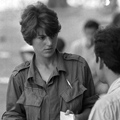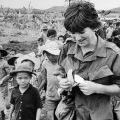Kate Webb (1943-2007) was a New Zealand born war correspondent during the Vietnam War mistakenly reported to have been killed and cremated in Cambodia - only to emerge from the jungle alive.
Early life
Catherine (Kate) Merrial Webb was born in Christchurch in 1943 but moved to Australia as a child when her father took up an academic post in Canberra. After her parents were killed in a car crash when she was eighteen Webb paid her own way through university. She graduated with an honours degree in symbolic logic from Melbourne University and began working as an artist, making stained glass windows and painting.
Webb's career in journalism began when she took a secretarial position at the Sydney Daily Mirror to pay for a stained glass window she had broken. She quickly moved into reporting and was sent to Indonesia in 1967 to cover the crisis following the fall of President Sukarno.
Going to Vietnam
Black market
In Saigon Webb spent considerable time ‘off duty' investigating the involvement of South Vietnamese officials in the black market. These inquiries did not go unnoticed – on one occasion she returned to her apartment to find a .45-calibre bullet hole in the door and the slug embedded in the wall above her bed.
In 1967 Webb resigned from the Sydney Daily Mirror, and with a few hundred dollars and a Remington portable typewriter made her way to Saigon to cover the escalating war in Vietnam. Initially hired by UPI to cover South Vietnamese politics Webb was soon on the battlefield earning a reputation as a hard-drinking, chain-smoking war correspondent.
Armed with notebook and pen she accompanied United States, Australian and South Vietnamese troops on operational patrols, and was the first wire correspondent to reach the United States Embassy on the first morning of the 1968 Tet Offensive. Later that year Webb survived an American rocket attack on a Saigon military building that killed everyone around her.
Asked how she coped with being one of few female journalists in Vietnam, Webb replied "If you don't demand special privileges and don't ask where you plug in your hair dryer, you have no problems."
Captured in Cambodia
In 1971 Webb became UPI bureau chief in Cambodia following the death of Frank Frosch. Later that year she made international headlines after being captured covering a clash between North Vietnamese and United States-backed Cambodian troops on Highway 4, south of Phnom Penh. During the battle Webb and her Cambodian interpreter took cover in a ditch with a Japanese photojournalist and three other Cambodians – by the time they crawled their way out the Cambodian forces had retreated and they found themselves stranded.
Throughout that afternoon and night, the six of them crept through the foothills of Cambodia's Elephant Mountains, trying to avoid detection by nearby North Vietnamese soldiers. Their luck ran out the next morning when they stumbled into two North Vietnamese soldiers with AK47s. For the next 23 days Webb endured thirst, infection, long interrogations and other hardships before she was released 10 kilograms lighter and racked with malaria. By this time the world thought she was dead - premature official reports had claimed that a cremated body discovered was Webb's. The New York Times and other newspapers had published obituaries and her family had held a memorial service for her.
After the war
In 1975 she returned to Vietnam to cover the fall of Saigon. After the war Webb joined Agence-France Presse as a foreign correspondent. Over the next two decades she reported on the Tamil Tiger uprising in Sri Lanka, the assassination of Indian Prime Minister Rajiv Gandhi and the first Gulf War. She broke the news of North Korean leader Kim Il-Sung's death in 1994, covered the handover of Hong Kong to China in 1997 and the fall of Indonesia's President Soeharto in 1998. Her last big story was East Timor's tumultuous vote for independence in 1999.
There were some particularly dangerous moments along the way. In Afghanistan she was assaulted by a local warlord in a Kabul hotel and dragged up a flight of stairs by her hair. She escaped with the help of two colleagues, and hid on the window ledge while the warlord and his men searched the building for her. Later while working in India, she nearly lost an arm in a motorcycle accident.
Webb retired from front-line journalism in 2001 and returned to Australia. Diagnosed with bowel cancer in 2006 she passed away on 13 May 2007 aged sixty-four. Despite her reputation for hard-drinking, chain-smoking, and after-hours bravado, Webb described herself as "a real softie", explaining: "Hard people shatter."
The information above was compiled from reports by the Sydney Morning Herald, the LA Times and The New York Times








